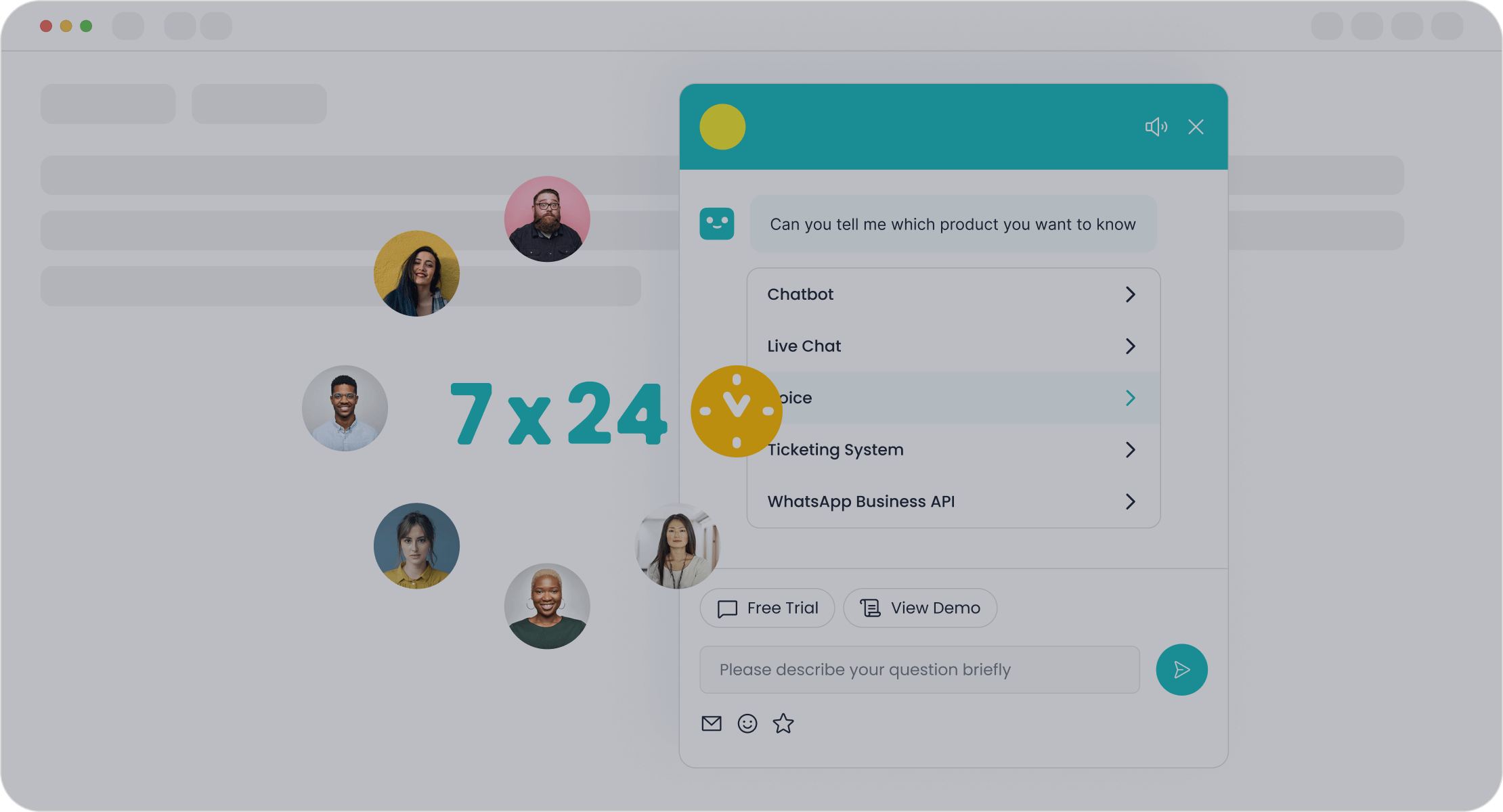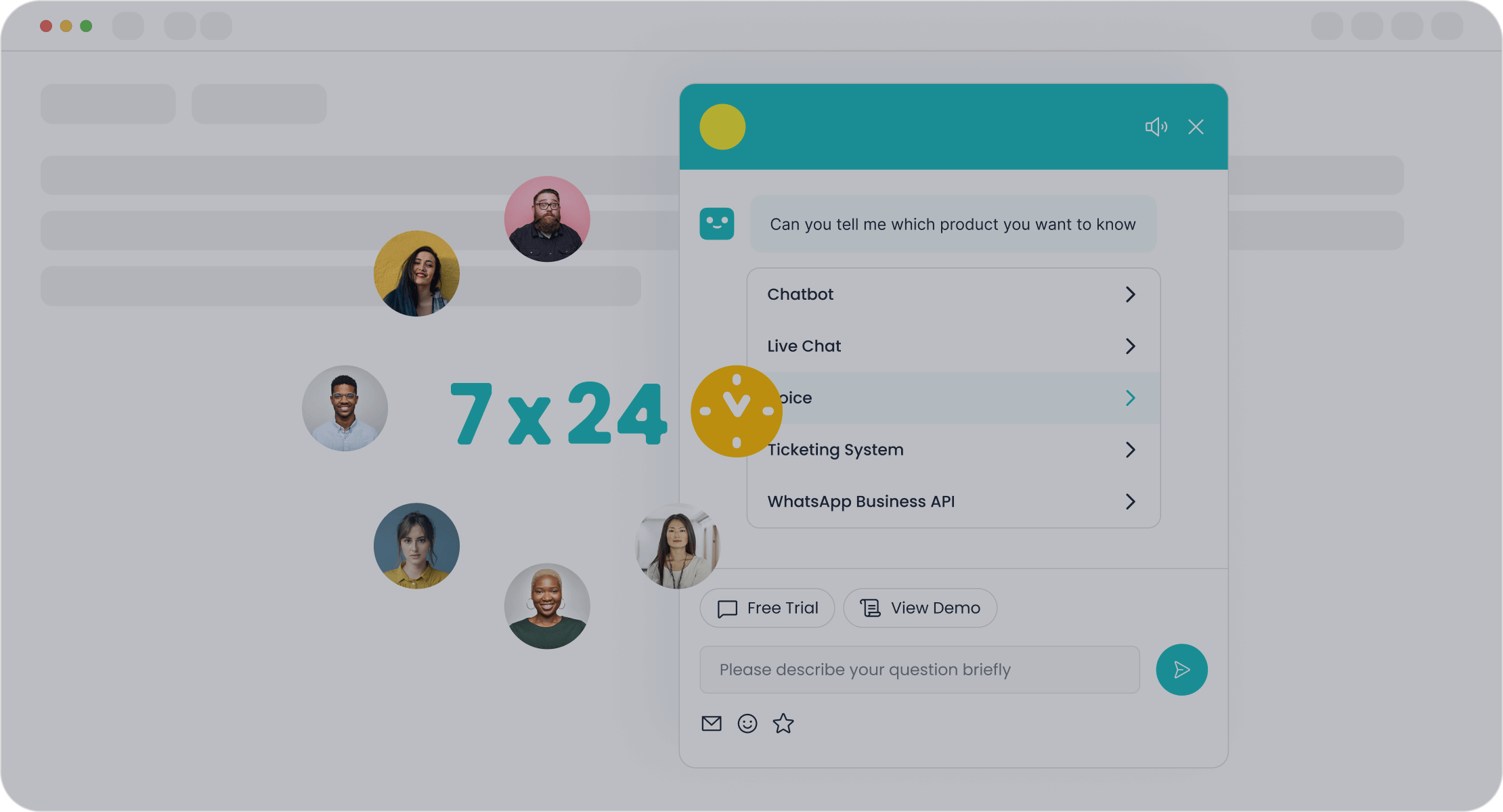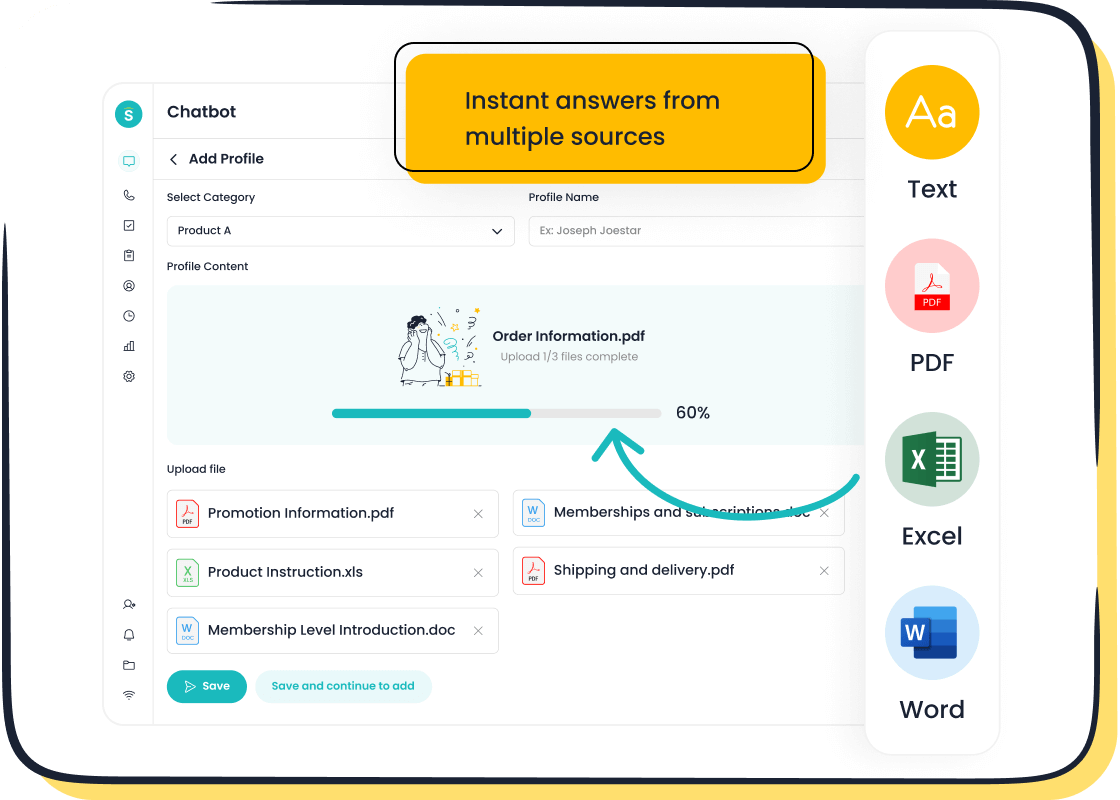AI Chatbots in Customer Service A Beginner's Guide

AI chatbots have transformed customer service by automating interactions and delivering instant support. These intelligent tools use advanced technologies to understand queries and provide accurate responses. Their ability to operate 24/7 ensures customers receive assistance anytime, enhancing satisfaction. For instance, 68% of users value the quick responses chatbots offer, while businesses report a 35% reduction in service costs due to AI automation. These are prime examples of AI in customer service that showcase the technology's effectiveness.

Sobot, a leader in this field, offers an AI-powered chatbot designed to improve efficiency and customer experience. It handles routine tasks, supports multiple languages, and integrates seamlessly with various platforms. By adopting Sobot’s chatbot, businesses can save time, reduce costs, and boost customer satisfaction.
What Are AI Chatbots in Customer Service?
Definition and Purpose
What makes a chatbot "AI-powered"?
AI-powered chatbots stand out because they use advanced technologies like machine learning and natural language processing (NLP). These tools allow the chatbot to understand and respond to human language in a conversational way. Unlike traditional chatbots, AI-driven chatbots learn from interactions and improve over time. They analyze customer queries, detect intent, and provide accurate answers. For example, conversational AI enables chatbots to handle complex questions, making them more effective in customer service. This adaptability ensures that AI-powered chatbots deliver smarter and more personalized experiences.
Key goals of AI chatbots in customer service
AI chatbots aim to enhance efficiency, reduce costs, and improve customer satisfaction. They handle repetitive tasks, such as answering FAQs, freeing up human agents for more complex issues. Companies like Klarna have seen remarkable results. By integrating chatbots, Klarna reduced response times from 4 hours to just 2 minutes and cut customer service costs by 30% in three months. These results highlight how AI in customer service can transform operations. The ultimate goal is to provide faster, more reliable support while maintaining high service quality.
Types of Chatbots
Rule-based chatbots vs. AI chatbots
Rule-based chatbots follow predefined scripts and respond based on specific keywords. They work well for simple tasks but struggle with complex queries. In contrast, AI chatbots use conversational AI to understand context and intent. This makes them more flexible and capable of handling diverse customer needs. For instance, Sobot’s AI chatbot uses a knowledge base to provide instant replies across multiple channels. It also learns from interactions, ensuring continuous improvement. While rule-based chatbots are limited, AI-driven chatbots offer a more dynamic and efficient solution.
Examples of AI in customer service
AI in customer service has revolutionized how businesses interact with customers. Klarna’s chatbot improved order processing efficiency by 40%, showcasing the power of AI-driven chatbots. Another example is Sobot’s chatbot, which operates 24/7 and supports multiple languages. It helps businesses save up to 50% on agent costs while boosting conversions by 20%. These examples of AI in customer service demonstrate how technology enhances both efficiency and customer satisfaction.
How Chatbots Work
Core Technologies Behind AI Chatbots
Natural Language Processing (NLP) and its role

Natural Language Processing (NLP) is the backbone of how chatbots work. It enables chatbots to understand and interpret human language. When you type a question, NLP breaks it down into smaller components, such as words and phrases, to identify the intent behind your query. This process allows the chatbot to provide accurate and relevant responses. For example, if you ask, "Where is my order?", NLP helps the chatbot recognize that you are inquiring about order tracking. Businesses benefit from this technology as it allows chatbots to handle up to 80% of routine inquiries, saving time and improving efficiency. Sobot’s AI chatbot uses NLP to deliver instant replies across multiple channels, ensuring seamless communication.
Machine Learning (ML) and chatbot training
Machine Learning (ML) plays a crucial role in training chatbots. It allows chatbots to learn from past interactions and improve over time. When you interact with a chatbot, ML algorithms analyze your input and compare it with previous data to generate the best possible response. Over time, this learning process helps the chatbot become more accurate and efficient. For instance, Sobot’s chatbot uses ML to refine its knowledge base, ensuring it provides precise answers. This adaptability is why 75% of business owners believe AI-powered chatbots enhance customer experience.
The Process of Interaction
How chatbots understand customer queries
Understanding customer queries is a multi-step process. First, the chatbot uses NLP to analyze your message and identify the intent. Then, it matches your query with the most relevant information in its database. For example, if you ask about a product's availability, the chatbot retrieves the necessary details from its knowledge base. This process is why 61% of consumers prefer faster replies from AI chatbots over waiting for human assistance. Sobot’s chatbot excels in this area by using a robust knowledge base built from various sources like PDFs and articles.
Generating responses and improving over time
Chatbots generate responses by combining NLP and ML. After understanding your query, the chatbot formulates a reply based on its training and available data. Over time, it learns from interactions to provide more accurate and personalized responses. For instance, Sobot’s AI chatbot uses real-time intent assistance to boost conversions by 20%. This continuous improvement ensures that chatbots remain effective and reliable, making them a preferred choice for 74% of consumers seeking quick support.
Benefits of AI Chatbots in Customer Service

Key Advantages
24/7 availability for customer support
AI customer service chatbots provide round-the-clock support, ensuring your customers always receive assistance. Unlike human agents, virtual chatbots never take breaks, allowing them to handle inquiries at any time. This availability significantly enhances customer satisfaction. For instance:
- 61% of consumers prefer faster replies from AI over waiting for human agents.
- AI chatbots enable continuous support, resolving tickets 52% faster than traditional methods.

Sobot’s AI customer service chatbot operates 24/7, offering real-time help across multiple channels. This ensures your business remains accessible, even during peak hours or holidays.
Faster response times and efficiency
AI chatbots excel at delivering quick and efficient responses. They analyze queries instantly and provide accurate answers, reducing wait times. Businesses using AI report a 37% drop in first response times. Additionally, 68% of users appreciate the speed of chatbot interactions. Sobot’s chatbot leverages advanced NLP to process queries swiftly, ensuring seamless customer interactions. This efficiency not only saves time but also improves the overall digital customer experience.
Cost savings for businesses
AI chatbots help businesses cut costs by automating repetitive tasks. They reduce the need for additional agents, saving up to 50% on labor expenses. The following table highlights key financial metrics:
| Metric | Description |
|---|---|
| Query Resolution Rate | High percentage of inquiries resolved by the chatbot. |
| Cost per Interaction | Lower costs due to automation. |
| Labor Cost Reduction | Significant savings from reduced human support requirements. |
Sobot’s AI customer service chatbot offers a cost-effective solution, handling high query volumes while maintaining quality service.
Enhancing Customer Experience
Personalization through data analysis
AI chatbots analyze customer data to deliver personalized responses. This creates a tailored support experience, making customers feel valued. For example, 73% of shoppers believe AI improves their customer experience. Sobot’s chatbot uses real-time intent assistance to provide personalized support, boosting conversions by 20%.
Consistency in responses
AI customer service chatbots ensure consistent and accurate responses. They rely on a centralized knowledge base, eliminating errors caused by human inconsistencies. This reliability builds trust and enhances customer interactions. Sobot’s chatbot excels in maintaining consistency, offering precise answers across all channels.
Practical Applications of AI Chatbots

Real-World Use Cases
Answering FAQs and resolving common issues
AI chatbots excel at handling repetitive queries, such as answering FAQs. They provide instant responses, reducing wait times and improving customer satisfaction. Businesses like Klarna have seen remarkable results. Their chatbot reduced response times from hours to seconds and cut operational costs by 45%. Similarly, The Green Garden decreased response times from 4 hours to just 2 minutes, while also increasing order processing efficiency by 40%. These examples highlight how chatbots streamline customer service operations and enhance the overall experience.

Order tracking and status updates
Order tracking is another area where chatbots shine. They allow customers to check the status of their orders instantly, without needing to contact a human agent. This feature is especially valuable during peak shopping seasons when inquiries surge. AI chatbots use natural language processing to understand tracking requests and provide accurate updates. For instance, Sobot’s chatbot integrates seamlessly with various platforms, enabling real-time order tracking across multiple channels. This capability ensures customers stay informed, reducing frustration and building trust.
Assisting with onboarding and account setup
AI chatbots simplify onboarding and account setup processes by guiding users step-by-step. They provide clear instructions and resolve any issues that arise during the process. This automation reduces the workload for human agents and ensures a smooth experience for new customers. For example, Sobot’s chatbot offers multilingual support, making it easier for businesses to onboard customers from diverse backgrounds. By automating these tasks, chatbots improve efficiency and help businesses scale their customer service efforts.
Industry Examples
E-commerce and retail
In e-commerce and retail, chatbots play a crucial role in enhancing customer service. They assist with product recommendations, order tracking, and post-sales support. Statistics show that companies using chatbots for marketing see a 55% increase in high-quality leads. Additionally, chatbots contribute to upselling in 20% of cases and drive annual revenue growth of 7% to 25%. These figures demonstrate the significant impact of AI chatbots on the retail sector.
Banking and financial services
The banking industry benefits greatly from AI chatbots. They handle tasks like balance inquiries, transaction tracking, and fraud detection. Chatbots also improve customer satisfaction by providing 24/7 support. For instance, 73% of customers value the enhanced experience offered by chatbots in financial services. By automating routine tasks, chatbots allow banks to focus on more complex customer needs, improving overall service quality.

Sobot's success story with OPPO
Sobot’s collaboration with OPPO showcases the transformative power of AI chatbots. OPPO implemented Sobot’s chatbot to manage high volumes of customer inquiries during peak shopping periods. The chatbot resolved 83% of queries autonomously, achieving a 94% positive feedback rate. This integration also reduced knowledge base maintenance efforts by 90% and increased OPPO’s repurchase rate by 57%. These results highlight how Sobot’s chatbot enhances efficiency and customer satisfaction, making it a valuable tool for businesses.

Getting Started with AI Chatbots
Steps to Implement AI Chatbots
Assessing your business needs and goals
Before integrating AI into customer service, you need to evaluate your business requirements. Start by identifying the challenges your customer service team faces. Are response times too long? Do repetitive queries overwhelm your agents? Documenting these pain points helps you set clear goals, such as reducing costs or improving customer satisfaction. For example, businesses like Klarna have successfully used chatbots to cut operational costs by 45% while maintaining satisfaction rates above 85%. Understanding your needs ensures the chatbot aligns with your objectives.
Choosing the right chatbot platform or tool

Selecting the right chatbot platform is crucial. Look for features like multilingual support, 24/7 availability, and seamless integration with your existing systems. Sobot’s AI chatbot, for instance, offers these capabilities along with a no-coding-required setup. This makes it easy to deploy and customize for your specific needs. A well-chosen platform ensures your chatbot delivers efficient and reliable customer service, enhancing both productivity and user experience.
Training and testing your chatbot
Once you’ve chosen a platform, focus on training your chatbot. Use real customer queries to build a robust knowledge base. Test the chatbot extensively to ensure it understands various scenarios and provides accurate responses. For example, Sobot’s chatbot uses machine learning to refine its performance over time, ensuring continuous improvement. Proper training and testing prepare your chatbot to handle real-world interactions effectively.
Monitoring and Improving Performance
Tracking key performance metrics
Monitoring your chatbot’s performance is essential for long-term success. Focus on metrics like query resolution rate, response time, and customer satisfaction scores. The table below outlines a step-by-step approach to tracking performance:
| Step | Description |
|---|---|
| 1 | Start with a Baseline: Document current customer service stats. |
| 2 | Focus on Key Metrics: Monitor costs, resolution rates, and satisfaction. |
| 3 | Use Analytics: Identify improvement areas and refine conversation flows. |
| 4 | Connect the Dots: Integrate chatbot data with CRM systems for insights. |
By tracking these metrics, you can measure the chatbot’s impact and identify areas for improvement.
Continuously updating and refining the chatbot
AI chatbots require regular updates to stay effective. Use analytics tools to refine conversation flows and improve accuracy. Businesses like The Green Garden achieved a 40% boost in order processing efficiency by continuously optimizing their chatbot. Sobot’s chatbot simplifies this process with easy-to-use reporting tools, allowing you to make data-driven improvements. Regular updates ensure your chatbot adapts to changing customer needs and maintains high performance.
AI chatbots have revolutionized customer service by automating interactions, reducing costs, and enhancing satisfaction. They use technologies like NLP and ML to deliver immediate responses, handle repetitive tasks, and provide personalized support. Businesses benefit from improved efficiency and scalability without proportional cost increases. The table below highlights their impact:
| Evidence Type | Description |
|---|---|
| Immediate Responses | AI chatbots provide immediate responses to customer inquiries, significantly reducing wait times. |
| Operational Cost Reduction | Implementing chatbots leads to lower operational costs for customer service. |
| Customer Satisfaction | Higher customer satisfaction scores are reported due to personalized support from chatbots. |
| Efficiency | Chatbots enhance efficiency through automation, allowing for scalable support without proportional cost increases. |
Sobot’s AI Chatbot stands out as a reliable solution for businesses aiming to improve customer service. It operates 24/7, supports multiple languages, and integrates seamlessly with various platforms. By adopting Sobot’s chatbot, you can save time, reduce costs, and boost satisfaction.
While automation offers numerous benefits, balancing it with human interaction remains essential. Chatbots handle routine queries efficiently, but human agents provide empathy and creativity for complex issues. This synergy ensures a comprehensive and satisfying customer experience.
FAQ
What is the main purpose of AI chatbots in customer service?
AI chatbots aim to automate repetitive tasks like answering FAQs and tracking orders. They improve efficiency, reduce costs, and enhance customer satisfaction. For example, Sobot’s AI chatbot operates 24/7, saving businesses up to 50% on agent costs while boosting productivity by 70%.
Can AI chatbots handle complex customer queries?
Yes, AI chatbots use technologies like NLP and machine learning to understand context and intent. This allows them to address complex queries effectively. Sobot’s chatbot, for instance, learns from interactions and provides accurate, personalized responses, ensuring a seamless customer experience.
How do AI chatbots improve customer satisfaction?
AI chatbots provide instant responses, personalized support, and consistent answers. Customers value quick assistance, with 61% preferring chatbots for faster replies. Sobot’s chatbot enhances satisfaction by offering multilingual support and real-time help across multiple channels.
Are AI chatbots difficult to set up?
No, most AI chatbots, including Sobot’s, feature user-friendly interfaces. Sobot’s chatbot requires no coding and uses a point-and-click setup. This makes it easy for businesses to deploy and customize the chatbot according to their needs.
How do AI chatbots save businesses money?
AI chatbots reduce the need for additional agents by automating routine tasks. Businesses using Sobot’s chatbot save up to 50% on labor costs. The chatbot also boosts conversions by 20%, making it a cost-effective solution for customer service.
See Also
Tips for Selecting Top Chatbot Software for Your Needs
The Impact of Chatbots on E-commerce Customer Happiness
Simple Ways to Integrate Chatbot Examples on Your Site